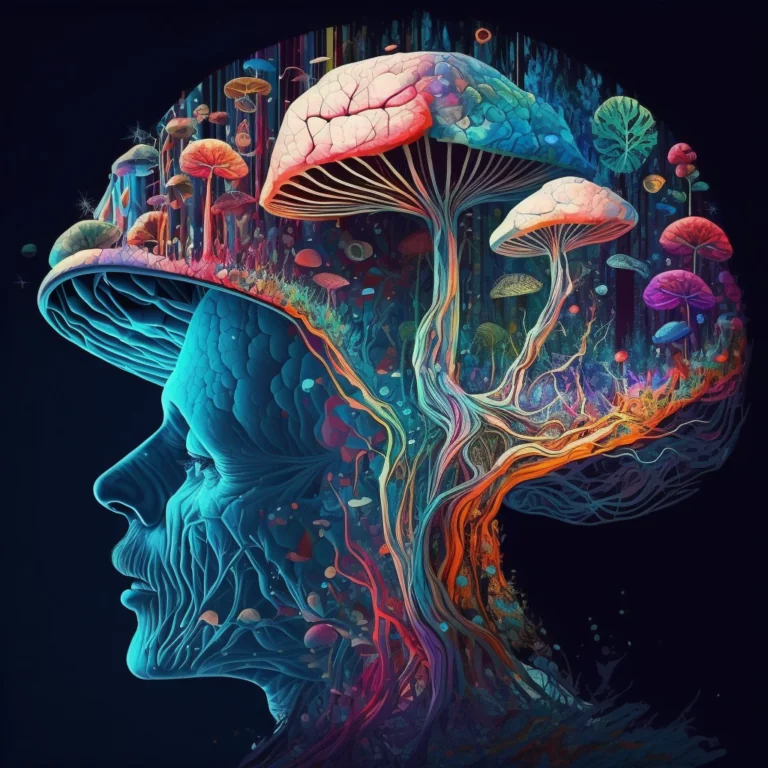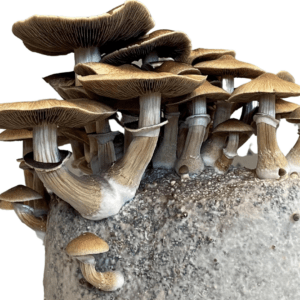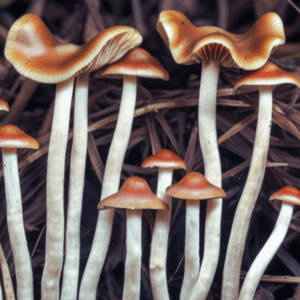
Psilocybin mushrooms, commonly referred to as “magic mushrooms” or “shrooms,” are a type of mushroom that contains the psychoactive compound psilocybin. Psilocybin is a naturally occurring substance that produces psychedelic effects when ingested. It is found in over 200 species of mushrooms, typically in the genera Psilocybe, Conocybe, Gymnopilus, and Panaeolus. Psilocybin mushrooms are most commonly found in tropical and subtropical regions, including Central and South America, Mexico, and the United States.
Understanding the different types of psilocybin mushrooms cannot be overstated. Knowing the various types of psilocybin mushrooms is essential for anyone considering using them; they can be highly variable in their effects, potency, and toxicity. For example, some psilocybin mushrooms are extremely potent and can have powerful hallucinogenic effects, while others may have none. Additionally, some types of psilocybin mushrooms may be toxic or even deadly if ingested. Understanding the different types of psilocybin mushrooms can help you make sure that you are using them safely and responsibly. It is also essential to understand the legal status of psilocybin mushrooms in your area, as some are illegal in some countries and states. Finally, knowing the types of psilocybin mushrooms can also help you to identify them in the wild and ensure that you are harvesting the correct type.
Psilocybin mushrooms are fungi that contain the psychoactive compound psilocybin. They are commonly called “magic mushrooms” or “shrooms” and have been used in religious and spiritual ceremonies for centuries. Psilocybin mushrooms are found in many parts of the world, including North and South America, Europe, and Asia. They come in various shapes, sizes, and colors and have a long, thin stem with a rounded or pointed cap. The caps are usually brown, yellow, or white and may be covered with tiny dark specks. The stem is often white and may have dark rings at the top. Psilocybin mushrooms can also have a variety of tastes and smells, from mildly sweet and earthy to a more pungent and bitter flavor
Psilocybin mushrooms work by releasing a psychoactive compound called psilocybin when ingested. Psilocybin is a naturally occurring psychedelic compound found in various mushroom species. It is believed to be responsible for the psychedelic effects that people experience when they consume these mushrooms. Psilocybin interacts with serotonin receptors in the brain, altering consciousness and perceptions of reality. The effects of psilocybin can vary significantly, depending on the individual and the amount consumed. They can range from a feeling of relaxation and mild visual distortions to profound changes in perception, mood, and thoughts.
The use of psilocybin mushrooms dates back thousands of years. In ancient Mesoamerican cultures, such as the Aztecs and the Mayans, psilocybin mushrooms were used as a religious sacrament in ceremonies. Throughout the 20th century, psilocybin mushrooms were used for medicinal, spiritual, and recreational purposes. In recent years, psilocybin mushrooms have become popular as more people seek their potential therapeutic effects.
Psilocybin mushrooms are a type of mushroom that contains the hallucinogenic drug psilocybin. These mushrooms are commonly found in nature and in many different regions worldwide. While there are many different psilocybin mushrooms, some of the most popular species include Psilocybe cubensis, Psilocybe semilanceata, Psilocybe cyanescens, and Psilocybe azurescens.
Psilocybe cubensis is one of the most well-known species of psilocybin mushrooms and is commonly referred to as the “Golden Teacher” mushroom. This mushroom species is characterized by its reddish-brown to golden-brown caps and thick, white stems. It is found in many tropical and subtropical regions around the world.

Psilocybe semilanceata is another popular species of psilocybin mushroom, also known as the “Liberty Cap” mushroom. This species is characterized by its small, brown caps and thin, white stems. It is found mainly in grassy areas in Europe, North America, and Australia.
Psilocybe cyanescens is a species of psilocybin mushroom that is often referred to as the “Wavy Cap” mushroom. Its large, wavy caps and thick, white stems characterize this species. It is found in many temperate regions around the world.

Psilocybe azurescens is a species of psilocybin mushroom often referred to as the “Flying Saucer” mushroom. This mushroom species is characterized by its large, rounded caps and thick, white stems. It is found mainly in coastal regions of the Pacific Northwest.
Gymnopilus mushrooms are a genus of fungi that contain several species of mushrooms that produce psilocybin. These mushrooms are easily identifiable due to their bright orange or rusty brown caps. They grow in woody substrates and can be found in clusters or singly.
Panaeolus Cyanescens mushrooms are a genus of fungi that contain several species of mushrooms that produce psilocybin. These mushrooms are grayer and may have a small, blackish spore print. They tend to grow in grassy areas and can be found in clusters or singly.
Conocybe mushrooms are a genus of fungi that contain several species of mushrooms that produce psilocybin. These mushrooms are easily identified by their thin, cylindrical stems and yellowish-brown to reddish-brown caps. They grow in grassy areas and can be found singly or in clusters.
Psilocybin mushrooms are known for their array of diverse and unique strains. Each species of psilocybin mushrooms can have a wide range of strains, each with its own set of characteristics and effects.
The different strains within each species of psilocybin mushrooms can have varying effects on the user. For example, different strains can have different levels of psilocybin and psilocin, meaning that the effects could range from mild to intense, depending on the strain. Additionally, different strains may have different levels of other psychoactive compounds, such as baeocystin or norbaeocystin, which can also influence the effects of the mushroom.
Some of the more notable strains within the most popular species of psilocybin mushrooms include Psilocybe cubensis, Psilocybe semilanceata, and Psilocybe cyanescens. Some of the more well-known strains of Psilocybe cubensis include Golden Teacher, B+, and Amazonian. Psilocybe semilanceata has strains such as Liberty Cap, Magic Mushroom, and Penis Envy. Psilocybe cyanescens has strains such as Wavy Cap, Blue Meanies, and Albino Penis Envy.
It is important to note that psilocybin mushrooms can have severe and unpredictable effects and can even result in death in rare cases. Psilocybin mushrooms can produce profound psychological effects, including perception, mood, and cognition changes. Additionally, psilocybin mushrooms can interact with other medications and should not be consumed if you have a pre-existing medical condition or are taking any medications. It is also important to note that not all mushrooms are safe to eat, and some can even be poisonous.
When consuming psilocybin mushrooms, it is essential to use caution and take certain precautions. First, ensure you know what type of mushroom you are consuming and that it is safe. Do not consume psilocybin mushrooms if you are pregnant or breastfeeding; do not take them with alcohol or other drugs. It is also advisable to start with small doses and go slowly, as the effects can be unpredictable.
It is also important to know the legal implications of consuming psilocybin mushrooms, as they are currently illegal in many countries. Even in countries where psilocybin mushrooms are legal, it is vital to understand the legal implications of possessing, growing, and consuming them. Therefore, it is advisable to research the laws in your local jurisdiction before consuming psilocybin mushrooms.
In conclusion, there are various psilocybin mushrooms with different potency levels, effects, and potential risks. Therefore, careful study and understanding of the different types are essential for the safe and enjoyable use of psilocybin mushrooms. While the impact of consuming psilocybin mushrooms can vary greatly, the potential for a powerful, transformative experience is present in all psilocybin mushrooms. With the proper preparation, knowledge, and respect for the substance, psilocybin mushrooms can be a powerful tool for self-exploration and personal growth.
